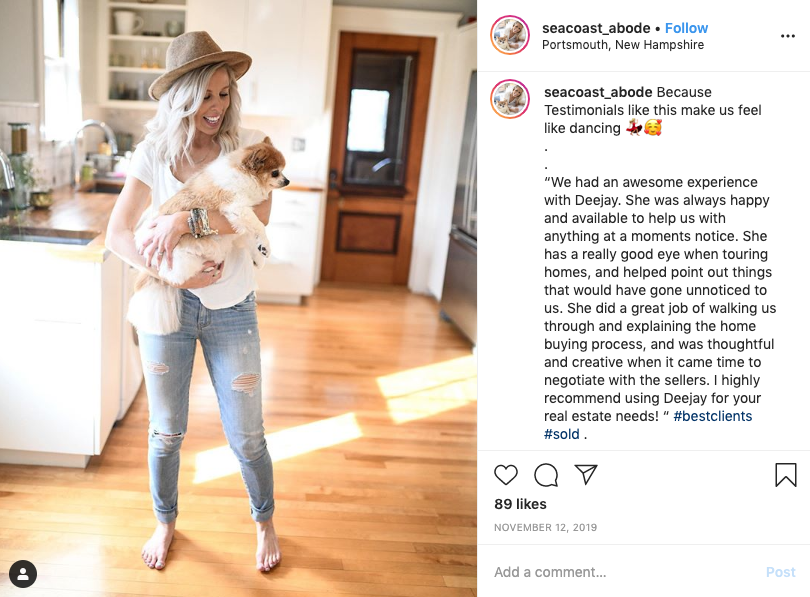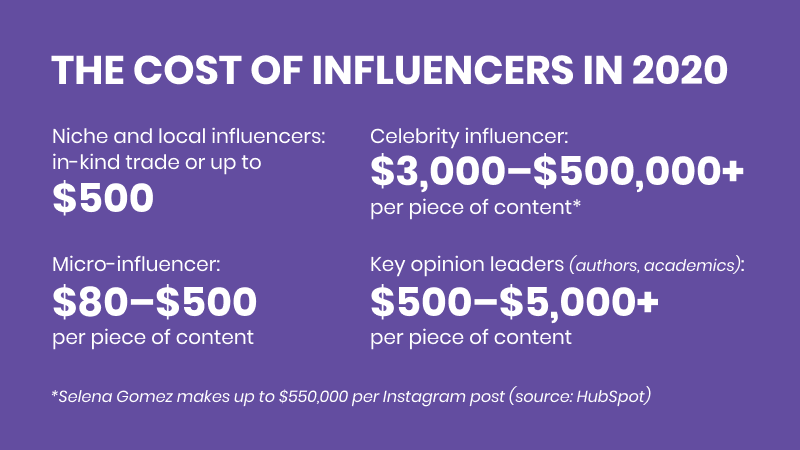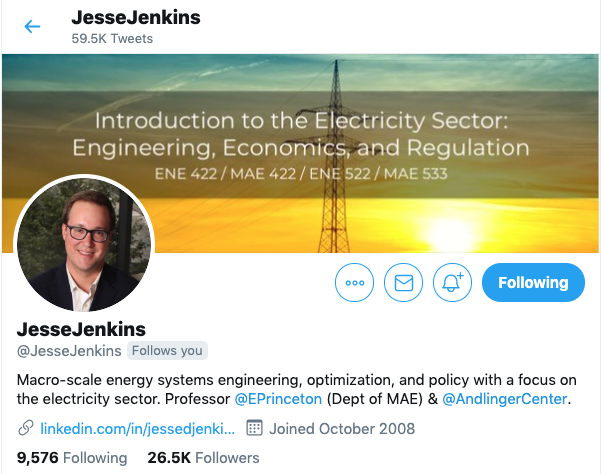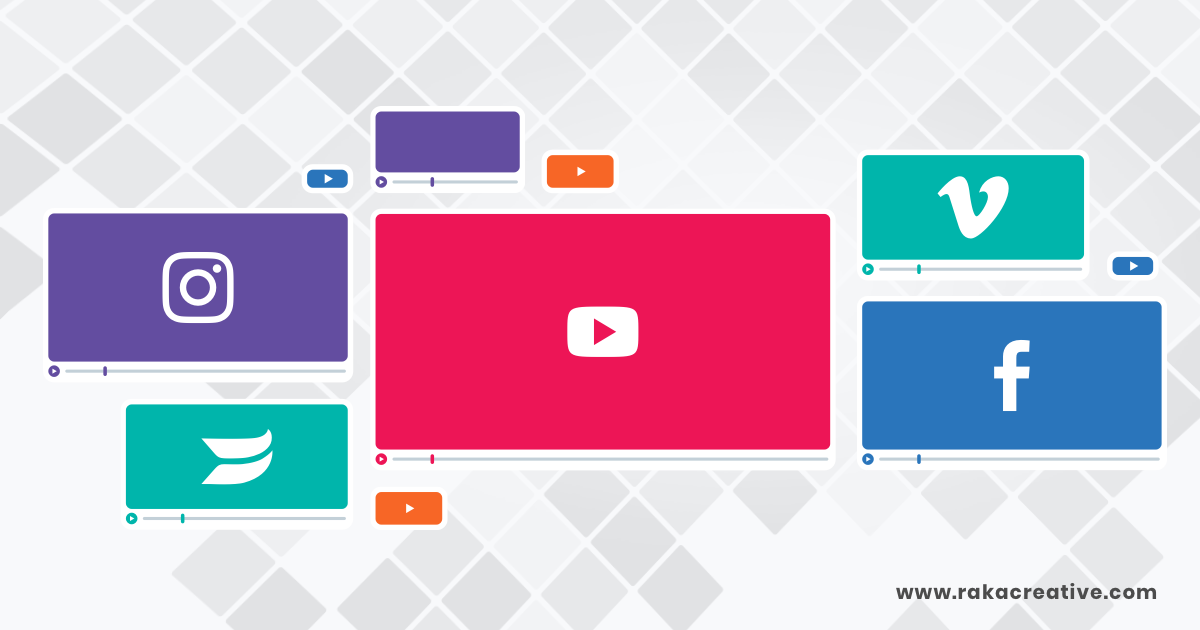Social media influencers seem to be everywhere these days. You’ve likely seen them in your Instagram feed, holding their favorite seltzer and talking about the amazing day they had working up a thirst #ad. While celebrity and lifestyle social media influencers get a lot of hype, there are countless other influencers promoting brands and getting results, some with fewer than 2,000 followers.
Social media influencers can create awareness for your company’s products and services, and even change consumer perceptions of your brand, even in our new COVID-19 world. Yet some companies may find this type of marketing a bit mysterious, especially when first entering the marketplace. Social distancing, limitations on travel, and new remote school and work-from-home policies have changes some of what influencers are doing, but the purpose and benefits of social media influencers remain the same. This post will provide insights and best practices for engaging with influencers, and how to find the right one for your business.
What is a social media influencer?
State of the influencer marketplace
Influencer, micro-influencer, or key opinion leader?
How do social media influencers work?
Before you engage
Where to look for influencers and how to choose
Social media influencer best practices
Disclosing it’s an #ad
Engage and report
One step closer to an influencer marketing strategy
What is a social media influencer?
What comes to mind when you think of a social media influencer? Selena Gomez? Kylie Jenner? Kevin Curry? These celebrity influencers have built a brand for themselves in part by getting paid to promote other brands. High-profile influencers make sense for national and global brand partnerships, but are beyond the budget of most companies. So where does that leave mid-sized and small companies who want to access the energy and audiences of influencers? Understanding what an influencer is and the different tiers of influence is a good first step.
 When looking at a potential influencer, they should have these characteristics:
When looking at a potential influencer, they should have these characteristics:
-
- Hold some level of authority with an audience based on his or her knowledge, position, or relationship with the audience.
- A distinct following within a specific niche. The audience should have some overlap with your company’s target audience.
- A following with whom he or she actively engages. While the size of the following is a consideration, the level of engagement is equally, if not more, important.
- An air of authenticity which shows the audience he or she is not just a paid spokesperson, but someone who is aligned with a product based on shared values.
As you begin your search for social media influencers, look for a like-minded partner, not a living breathing billboard for your product or service. Social media influencers work because they are seen as real people with valuable opinions. Today’s audiences are savvy and can smell inauthenticity a mile away. Your investment in influencers will not be effective if you insist on them delivering a canned sales pitch. As the digital strategist Jenn Chen points out on Sprout Social, “Influencer marketing works because of the high amount of trust that influencers have built up with their following, and recommendations from them serve as a form of social proof to your brand’s potential customers.”
State of the influencer marketplace
Influencer marketing was a quickly growing segment of social media marketing that was showing great return on investment for brands in the months before March 2019—then the declaration of the coronavirus pandemic cause many companies to reevaluate their strategies and influencers reported seeing contracts dry up. In the months since, however, companies have seen social media use soaring. The digital marketing news site, MarTech Series noted that brands have been responding with content that addresses what people are experiencing being home more. “Health and wellbeing, cooking and baking, arts and crafts and entertainment such as music and film have all increased dramatically over the course of this year, even travel continues to rise with more influencers choosing to explore more local areas,” according to MarTech.
2020 has clearly been a year like no other, and COVID-19, heightened awareness of social and racial justice issues, combined with a general sense of instability both at home and in our communities, had many questioning whether influencer marketing was dead, or at least sidelined for companies’ fears of appearing tone deaf. But a look back at the year since the pandemic started shows influencer marketing is just as impactful as it was before—it’s just adopted different tactics and a different tone.
The marketing technology and consumer engagement company Valassis surveyed 1,000 people to gain insight into what motivates them to engage with social influencers. It found 51% of consumers have purchased a product or service after seeing it used or promoted by an influencer in the past two years. It also found that 48% of consumers said they are inclined to be loyal to a brand or store that shares their values, and that 65% of consumers say they would stop following an influencer if they do or say something that does not align with their personal ethics and values.
These stats emphasize the importance of working with influencers that are aligned with your company’s products, voice, and mission. People want brands to share their values, especially when equality and diversity are at the forefront of buyers’ minds.
Influencer, micro-influencer, or key opinion leader?
Influencer marketing is not one size fits all. The types of influencers that are effective for one company may not be the right fit for another. You should first review your buyer personas, look at the questions they’re asking, and where they are getting their information. If you are trying to reach outdoor clothing retailers, you may find the buyers at those stores follow Instagram accounts that feature people hiking, rock climbing, and mountain biking. Perhaps you run a start-up that’s developed cutting-edge clean energy technology. Having prominent voices on #energytwitter (yes that is a thing) talk about your tech is a great way to raise the company’s profile.
There are a few distinct levels of influencers companies can engage with, from local thought leaders to international celebrities, each bringing their own set of benefits.
Local and niche influencers
If you want your message to be delivered to a certain audience in a certain industry or region, niche influencers can deliver a lot of bang for your buck. Niche influencers have between 1,000 to 5,000 followers and will post content focused on their area of expertise, whether it’s styling hair or dog walking. Local influencers have a similar-sized following but offer brands a unique opportunity to tap into a specific community or state, like working with a farmer promoting sustainable practices or collaborating with a well-liked restaurateur.
 Take for example this real estate agent Deejay Berry (@seacoast_abode with 3,000 followers) based in Portsmouth, N.H., a suburban coastal community just north of Boston. Her account features images of beautiful homes, great interior designs, and Berry looking great while she’s on the job. Architects, home design firms, home decor retailers, clothing retailers, jewelers, furniture makers—the possibilities are many—all could benefit from a collaboration with Berry.
Take for example this real estate agent Deejay Berry (@seacoast_abode with 3,000 followers) based in Portsmouth, N.H., a suburban coastal community just north of Boston. Her account features images of beautiful homes, great interior designs, and Berry looking great while she’s on the job. Architects, home design firms, home decor retailers, clothing retailers, jewelers, furniture makers—the possibilities are many—all could benefit from a collaboration with Berry.
Niche influencers have been getting more attention from marketers because they offer collaborations at reasonable prices (and sometimes even for in-kind trade), and offer great results. Niche influencers have the best engagement of any tier of influencer averaging an 8.8% engagement rate. Some great accounts may not yet be engaging in collaborations, so keep that in mind when approaching this type of influencer.
Micro-influencers
Micro-influencers have between 5,000 and 50,000 followers and often specialize in a genre of content, such as nutrition, parenting, fitness, or fashion. Micro-influencers are more likely to view their collaborations as part of their brand and in turn are more likely to ask for compensation. Like niche influencers, the smaller, targeted nature of their audience results in better overall post engagement. Micro-influencers have twice the average engagement rate at 6.3% as influencers with more than 10,000 followers.
Diego Leon (@dandyinthebronx with 43,000 followers on Instagram) is an influencer who brings street style to old-school mens’ fashion. Young, hip, and funny, Leon’s posts are eye-catching, and with New York City as the backdrop, always classic.
Key opinion leaders
Key opinion leaders are seen by their followers (and often by others) as experts on a specialized topic within a particular field. Economists, scientists, doctors, columnists, are all key opinion leaders, as are influencers who specialize in Keto diet cuisine, parenting children with disabilities, or brewing beer. Because of knowledge on a certain topic, key opinion leaders have already earned the trust of people within their industries and are followed almost exclusively by people who are also invested in those subjects. Key opinion leaders could have an audience of followers anywhere from 25,000 to more than 1 million.
When it comes to tackling the challenges of climate change in the energy sector, Jesse Jenkins (26,500 followers on Twitter) is one of the country’s leading academic experts on Twitter. His expertise on energy issues carries a lot of weight and has a far reach. Key opinion leaders are not influencers so when approaching them, remember that for many, professional ethics is a priority.
Celebrity influencers
When people think of celebrity influencers, it’s typically someone who is famous for other things and has gained a following online because of it. Think professional athlete, singer, or reality TV star. Yet people are now finding a form of celebrity from their social media presence alone. Amanda Cerny gained notoriety posting comedy sketches on YouTube and funny Vines (remember Vine? RIP). She has over 45 million followers across YouTube, Facebook, and Instagram. The actress/model/fitness enthusiast is today known outside of social media as well, having starred in a Cardi B music video and as an official UN Environmental Ambassador.
Many of today’s celebrity influencers are celebrities because they’ve been posting on their accounts (many of them starting on YouTube) for years. Beauty entrepreneur Michelle Phan is considered a YouTube pioneer, having produced hundreds of videos since 2007. She leveraged her channel to create the lifestyle network ICON and the beauty product subscription service, ispy. She and others like her who have created brands that have endured more than a decade are evidence that social media influencers are not a passing trend, but hold real sway within their industry.
If you are a brand looking to raise the profile of a particular product or service, a celebrity influencer brings instant attention and prestige. But it comes at a cost—starting at around $3,000 per piece of content.
How do social media influencers work?
At the heart of influencer marketing is the exchange of content for some kind of compensation. You’re probably asking yourself right now, how much does an influencer actually cost? There’s no one-size-fits-all pricing, and many brands have been able to access niche or micro-influencers for no cost or an in-kind trade. That being said, the general calculation in the influencer industry today is one cent per follower (or $100 per 10K followers) as a starting point. Additional content, such as blog posts, videos, even a carousel post, will likely bring additional fees.
 Followers are not the only metric for gauging price. Account reach, impressions, engagement and the influencer’s industry and area of expertise can also influence post value. Remember, influencers are not simply hired help. You are entering into a relationship where both parties should benefit. Sweetening the deal with swag, gifts, and engagement with their account can help your brand save money on influencer content.
Followers are not the only metric for gauging price. Account reach, impressions, engagement and the influencer’s industry and area of expertise can also influence post value. Remember, influencers are not simply hired help. You are entering into a relationship where both parties should benefit. Sweetening the deal with swag, gifts, and engagement with their account can help your brand save money on influencer content.
Before you engage
To get the most out of your social media influencer relationships, you must define what you hope to achieve. Think about what the messages will be, the timing of posts, and what you will need to provide the influencers to get them up to speed with your goals. Here are some of the things to do before you engage:
-
- Define your audience.
- Develop key messages.
- Identify resources and links the influencer can use to learn about your products or services and link to from the post, account, video or blog post.
- Create a calendar to track posts, messages, and the call-to-action.
- Set your budget.
- Determine your ideal terms of engagement.
- Set some SMART goals.
This last point, setting SMART goals, seems obvious but it can be easy to lose focus fast when the search for influencers begins. The outgoing restauranteur with 150,000 followers may seem like a get, but if her audience and social reach isn’t the right fit for your goals, your campaign will fall short.
Where to look for influencers and how to choose
Finding the right influencer for your brand is often the most challenging part of this process. Start with accounts popular within your industry and use these tools.
-
- Google is the place we look for everything else, so why not use it to find your influencers? Blogs which Google considers important rank first. Just like with other Google searches, long-tail keywords get you the most relevant results.
- AllTop compiles popular blogs in virtually every niche and industry. The tool works best if you use relatively broad topic terms in your search.
- FollowerWonk ranks influential people on Twitter. Searching by category returns accounts that use the term in their profile. This is helpful for identifying thought leaders in specialized industries.
Next, divide the influencers you like into tiers (local influencer, micro-influencer, etc.). Choose the tier, or the right balance from these tiers, based on your goals. For example, to boost brand awareness and increase an e-newsletter list by 1,000 contacts, get an influencer with a larger following to maximize reach, then work with a few niche influencers who can vouch for your excellent content.
Values are extremely important when selecting someone who will represent your brand. Make sure someone on your team does a little research into the influencers you like to ensure there are no hateful tweets or pictures of them in a tasteless Halloween costume on their Instagram feed.
Finally, evaluate each influencer for their authenticity, trustworthiness, and level of expertise. The most successful influencers have all three. Those are the influencers you want.
Be wary of influencer fraud
While many companies are happy to search for influencers on their own, influencer fraud is very real and could cost your company money if you are not careful. There are ways for people to fake engagement and follower numbers, making it seem as if they have more influence than they do. There are also influencers who agree to one form of compensation only to demand more payment later.
“There are few established norms for interacting with influencers, and little scaffolding set up to prevent, say, someone from sending you an invoice for services rendered after you’ve already sent them free candles.” — Jacqueline Detwiler, Entrepreneur magazine
One way to avoid signing on with fraudulent influencers is to rely on metrics beyond followers and engagement. Digging deeper into the account and seeing how he or she is communicating with the audience, what other products are being endorsed, and whether the influencer’s voice feels authentic, not spammy, is also important. Once engaged, use analytics to track not only post reach, but whether campaigns resulted in higher conversions for your brand.
Another option is to work with influencer match-makers and agencies who can do the work of vetting and finding right-fit influencers for you. Companies like Izea and Popular Pays can take care of the management side of influencer marketing, as well as provide reporting so you can track results and optimize campaigns.
Social media influencer best practices
Now that you have a few influencers you’d like to work with, here are some basic guidelines for engaging.
-
- Define a clear process for communicating.
- Be clear about expectations and messaging.
- Share the kind of images you like, as well as what you DON’T want to see.
- Share the campaigns goals.
- Determine the content the influencer will provide and the compensation.
- Negotiate access to analytics on the post.
- Document your expectations, timeline, and the influencer’s compensation in a contract.
- Engage with the post.
Disclosing it’s an #ad
When a company compensates a person for posting about that brand’s products or services, the Federal Trade Commission considers that an ad. To keep everyone in compliance, the FTC has put together the handy online brochure, “Disclosures 101 for Social Media Influencers,” which provides simple and helpful information for both influencers and partner brands.

The rules largely boil down to this: the disclosure should be obvious. In a video, for example, it should be in the video and not just the description. The FTC even recommends the influencer both say and include in text on-screen that the video is sponsored.
Disclosure is the responsibility of the influencer, but no brand wants the bad press from an influencer being outed for an undisclosed partnership. Make sure your team understands the guidelines, as well, and notify the influencer if the disclosure isn’t up to standard.
Engage and report
After all this preparation, it’s finally time to post. Once live, your marketing team should review and engage, both with the brand’s social media accounts and their personal accounts. Liking the post and comments from people who leave positive statements about the product (“I love this shirt! It’s so comfy!”) is a good place to start. Do some social listening on these posts to gauge consumer perceptions and ensure the conversation stays positive. Quickly respond when you see false claims or disparaging comments.
Once the campaign has concluded, it’s time to report out. Get performance analytics from the influencer and compare your own company’s analytics to the SMART goals you set. Did you get the new followers, new leads, or sales you were looking for? If not, where did the conversion break down? Was it the wrong influencer, wrong message, or wrong channel? Like everything in social media, trial and error is part of the process.
One step closer to an influencer marketing strategy
Whether you are a national brand or offer a niche service in an exclusive industry, influencer marketing can help raise the profile and authority of your brand more effectively than your own sponsored social media content. But don’t let the benefits lure you into starting an influencer campaign in haste. Putting in the work before you engage will set you on the right path to influencer marketing success.








